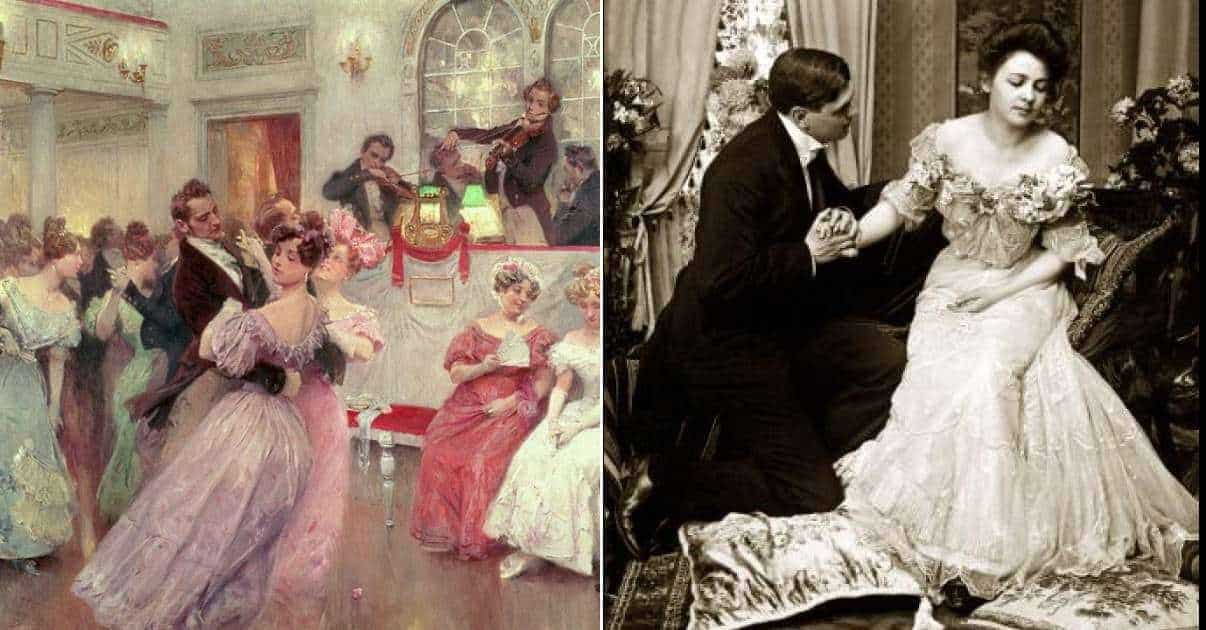Ah, the Victorian Age… You may have thought being named after—and presided over by—a strong female monarch like Queen Victoria (1837 – 1901) might have done something to soften the naked masculinity of the time. But you’d be wrong. This was the age of muscular Christianity, the age in which the western male came to dominate and subjugate through industry and empire; the age, in short, in which men were real men, women were real men; even the children were real men.
But brute masculinity was only one side of the coin. The Victorians were also romantics, albeit in a rigidly regulated way. Like every human civilization since the dawn of time, they recognized the amorous aspects of courtship while managing to cloak their fundamental need to reproduce as a species with a series of bizarre rituals. What makes the Victorians so unique is just how stringent these rituals were: essentially resembling rules and regulations you were obliged to adhere to when in pursuit of your armor.
As you can imagine, for the middle and upper classes this made dating a minefield. At least by today’s standards. Restrictive formality dictated every interaction you had with your potential match, meaning you really had to watch what you said and how you said it. What’s worse, all meetings were so rehearsed and formalized that you would only ever see your dearly sought-after at their prim and preened best (meaning you had no idea what they were actually like until you were married, and the mundane daily tasks took over). But there was at least some rationale behind the proscriptive values of Victorian courtship: to uphold the values they believed propped up their civilization.
Arm yourself with a good self-help book
For young men and women, having to navigate a dating culture that required them to act a certain way meant self-help books were all the rage. Women, in particular, were inundated with them: from Henry Butter’s ominously titled: “Maiden, Prepare to Become a Happy Wife and Mother” (1868) to Haydn Brown’s recently republished “Advice to Single Women” (1899). In an attempt to bridge the gap, some books even targeted both genders, including the weirdly avuncular-sounding “Uncle David’s Advice to Young Men and Women on the Subject of Marriage” (published in 1863 and written by someone whose name definitely wasn’t David).

Putting the question of authorship aside, Uncle David’s manual raises another interesting question: when was it appropriate to marry? Before 1823, the legal age for both men and women had been 23. With the passing of two parliamentary acts in 1823 and 1824, however, the age decreased to 12 for girls and 14 for boys. Parental consent was required of course, and cases of marriages taking place around this age were rare. Especially for the upper classes, the average age was between 18 and 23.
When it came to self-help marriage manuals, men had slimmer pickings. Some, however, armed themselves with a copy of “The Marriage Guide for Young Men“. (Self-) published in 1883 by American Methodist minister George W. Hudson. It hasn’t exactly stood the test of time. Instead, it’s more an intriguing repository of insane advice from a bygone age. Highlights include:

1) Seek out women with large, bulbous heads; they’re bound to be “well sexed” and “full of pluck.” Words fail me… Still, at least contemporary advice seemed a little saner in Britain, Haydn Brown writing: “The human male likes proportion and artistic beauty… bound together not by a corset but by ineffable manner of charm.”
2) (This one from the Hudson’s personal experience): Avoid marrying into families with fugitives. When the police come knocking, your beloved will be reluctant to give up their whereabouts, and this is likely to put a strain on the relationship. Good to know.
3) A man should realize the idea of sex is abhorrent for a woman, and shouldn’t affront her virtue by making her “the football of his lust”. (I have no idea what “football of his lust” means; nor do I think I want to).
4) If the marriage breaks down, don’t get divorced but put on a brave face and live out the rest of your lives together in abject misery. “Let the world know just as little about your wretchedness as possible… though domestic unhappiness should be feeding upon your very vitals.”

